Túnel Hanbyeok (한벽터널)
6.8Km 2024-04-06
Gyo-dong San 7-3, Wansan-gu, Jeonju-si, Jeonbuk-do
Pabellón Hanbyeokdang (한벽당)
6.8Km 2024-10-15
Girin-daero 2, Wansan-gu, Jeonju-si, Jeonbuk-do.
Ubicado en la ciudad de Jeonju de la provincia de Jeollabuk-do, el pabellón Hanbyeokdang ha sido designado Propiedad Cultural Tangible Nº 15. En 1404, un funcionario civil de la dinastía Joseon fundó esta estructura para su quinta. Hanbyeokdang se estableció al pie del monte Seungamsan con hermosos paisajes del río Jeonjucheon. En el pasado, muchos escritores buscaban este lugar para inspirarse sobre sus obras. El pabellón es famoso por la belleza del paisaje de nieblas en las montañas, haciéndolo uno de los ocho paisajes más famosos de Jeonju.
Hotel Sol (솔호텔)
6.8Km 2025-07-14
22-4, Ajung 2-gil, Deokjin-gu, Jeonju-si, Jeonbuk-do
This hotel is located 5 min from Jeonju Station by car. The exterior of the hotel is furnished with a chic grey decor, and there is a wide parking lot for the guests. There are 11 room types in total, all equipped with 50-inch smart TV and sofa, and whirlpool bathtubs with the exception of the Standard Double Room and Standard Double Circular Room. Latex beds ensure the comfort of the guests. Hotel Sol is dedicated to offering a restful stay in green nature. Terrace Spa Garden Room and Terrace Spa VIP Room, in particular, offer a comfortable garden furnished on the terrace, a space furnished with whirlpool spa and rattan furniture in a grass lawn surrounded by a screen of bamboo trees. Jeonju Hanok Rail Bike is reachable in 8 min by foot, while Jeonju Hanok Village can be reached by car in 7 min. Its location near Dongbu-daero gives it great access to Jeonju’s outskirts as well.
Sendero Baramssoeneun-gil (바람쐬는길)
6.9Km 2024-04-06
Baramssoeneun-gil 21, Wansan-gu, Jeonju-si, Jeonbuk-do
Supermercado Ahyeon (아현슈퍼)
7.0Km 2024-08-14
Dongseohak-dong 854-7, Wansan-gu, Jeonju-si, Jeonbuk-do
‘아현슈퍼’는 2022년도 방영된 tnN 드라마 ‘스물다섯 스물하나’의 1990년대를 배경으로 한 촬영을 하기 위해 레트로한 옛날 분위기가 그대로 담긴 슈퍼로 꾸몄다. 드라마 촬영 후 철거되었으나 인기에 힘입어 다시 설치되었다. 이곳은 운영 중인 슈퍼가 아닌 빈 집 세트장 이며 주인공들이 앉아서 도란도란 이야기를 나누던 노란 평상이 포토 스폿이다. 이곳에서 키스에 대한 나희도(김태리)와 백이진(남주혁)의 오해 장면, 백이진(남주혁)이 오토바이로부터 나희도(김태리)를 지켜낸 장면이 촬영됐다.
Aldea del Arte y la Cultura Samnye de Wanju (완주 삼례문화예술촌)
7.0Km 2024-10-15
Samnyeyeok-ro 81-13, Samnye-eup, Wanju-gun, Jeonbuk-do.
Esta aldea artística también es conocida con el nombre de "Samsam-yeye-mimi", en el municipio de Wanju-gun, provincia de Jeollabuk-do. Hay museos dedicados al diseño, galerías de medios audiovisuales, librerías y demás locales relacionados con el arte.
Ciclorraíl Hanok de Jeonju (전주한옥레일바이크)
7.1Km 2024-05-07
Dongbudae-ro 420, Deokjin-gu, Jeonju-si, Jeonbuk-do
El Ciclorraíl Hanok de Jeonju, se encuentra a tan solo 10 min en taxi desde la Aldea Tradicional de Jeonju. Las vías, de 3,4 km de largo, se pueden recorrer de ida y vuelta, y sus coloridos durmientes bastan para deleitar la vista de los visitantes. Desde el punto de partida hasta el punto de retorno las vías tienen una leve pendiente en ascenso, pero al dar la vuelta se convierte en un descenso que permite alcanzar velocidades excitantes, casi como las de los juegos mecánicos de los parques de atracciones.
Lago Ajung (아중호수)
7.1Km 2024-05-14
Ua-dong 1-ga 1111-5, Deokjin-gu, Jeonju-si, Jeonbuk-do
Santuario Chimyeongjasan (치명자산성지)
7.5Km 2025-08-13
Baramssoeneun-gil 89, Wansan-gu, Jeonju-si, Jeonbuk-do.
Se encuentra localizado en la cima del monte Seungamsan, que es el escenario de fondo del pabellón histórico Hanbyeokdang, ubicado en el área sudeste de la ciudad de Jeonju. Hacia el costado de una gran cruz de piedra, con aproximadamente 4 m de altura, se ha fundado una iglesia católica sobre una roca tallada. En este santuario descansan los restos de la pareja de Yu Jung-cheol (Juan) y Lee Sun-i (Rugalda), y el resto de los miembros familiares. Yu Hang-geom, el primer fiel católico de Corea, y padre de Yu Jung-cheol, nació en el pueblo Chonam, Iseo-myeon, de Wanju-gun. Después de sufrir opresiones y persecuciones por cuestiones religiosas, fueron decapitados en las afueras de Nammun. La pareja de Yu Jung-cheol y Lee Sun-i, luego de mantener la virginidad por sus ideales religiosos hasta después de 4 años de haberse casado, finalmente fueron condenados a muerte. La enorme cruz de piedra puede ser observada desde las distintas partes del área, y es famosa como lugar de peregrinación de los cristianos. Los túmulos de la pareja se encuentran enterrados en la parte más alta del santuario, y hacia un lado está presente la iglesia conmemorativa. Por encima de donde se encuentra la tumba de la pareja, se ve asomando la roca milagrosa (de Jesús y María), designado Patrimonio Natural por la excelencia de la escultura. Otra de las bellezas para apreciar es el camino que se presenta desde el comienzo hasta la cima de la montaña, que se asemeja a una alfombra de flores.
Espacio Abierto Nu-e (복합문화지구 누에)
8.3Km 2024-10-14
Wanju-ro 462-9, Wanju-gun, Jeonbuk-do

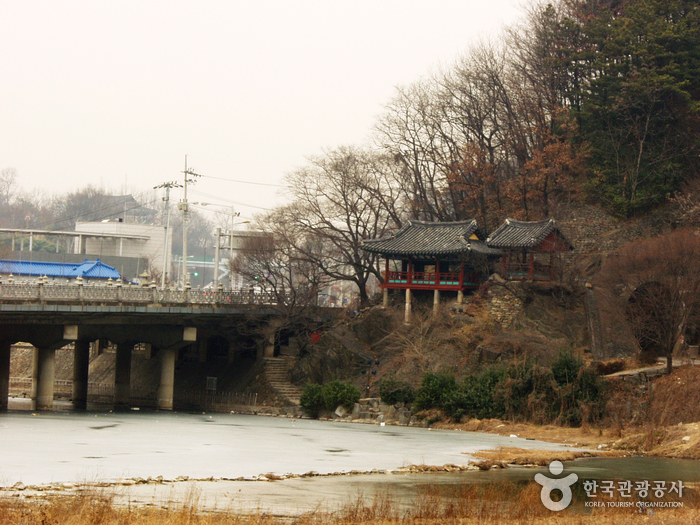
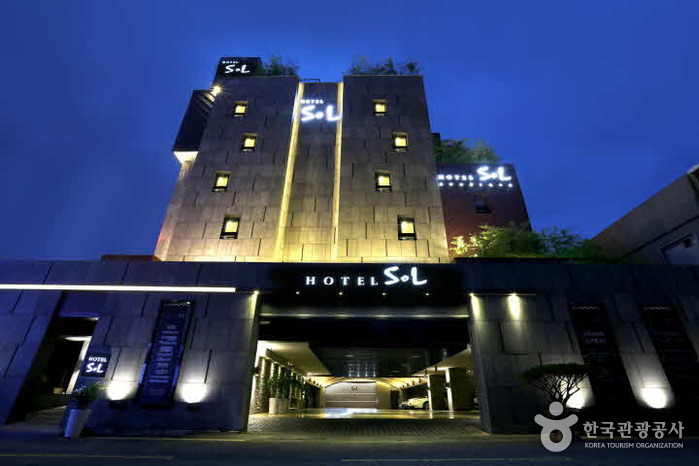
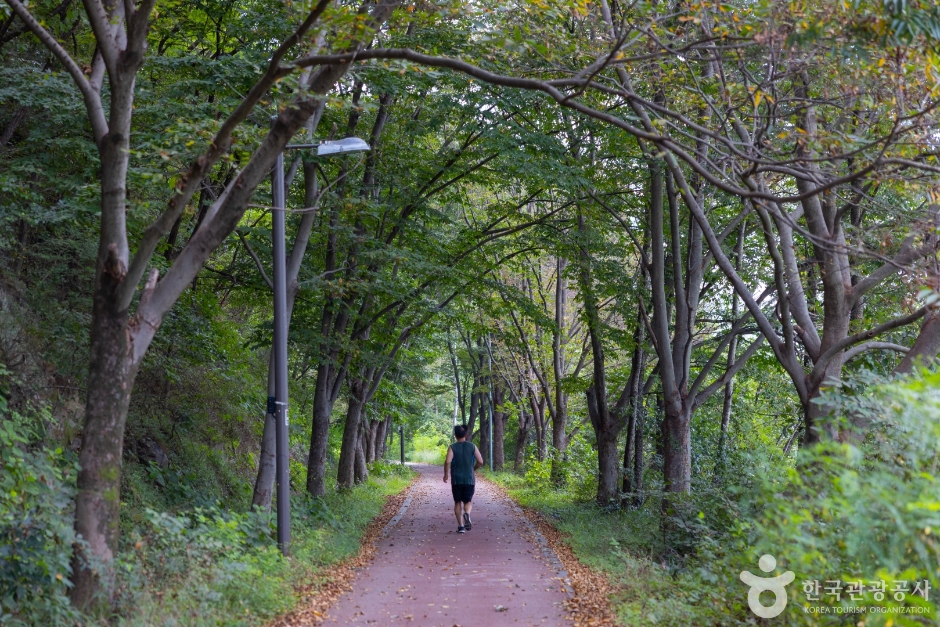
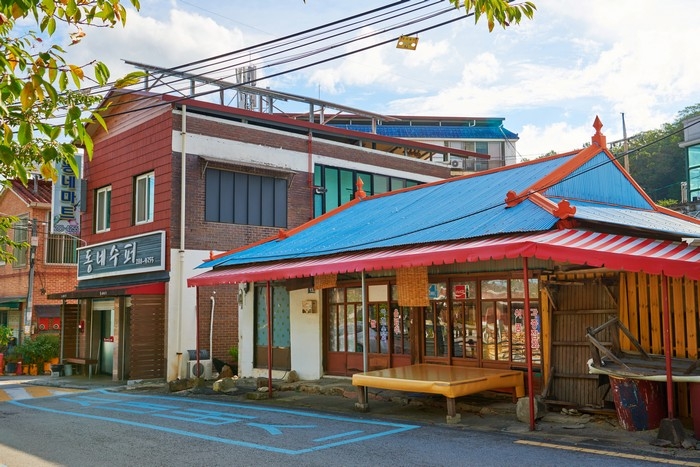

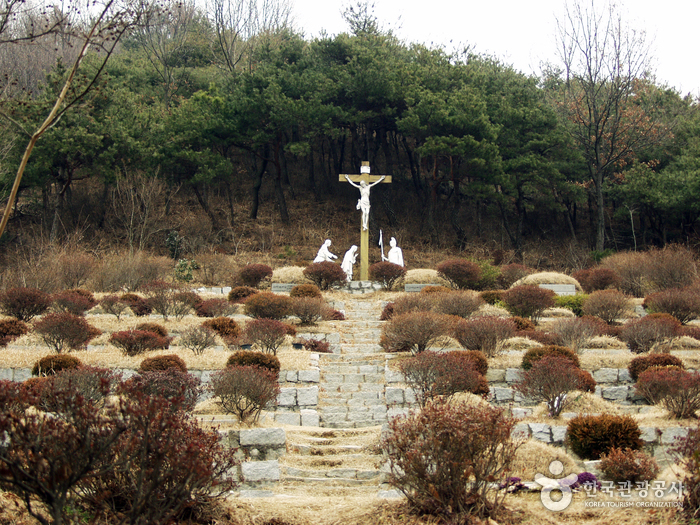
 Español
Español
 한국어
한국어 English
English 日本語
日本語 中文(简体)
中文(简体) Deutsch
Deutsch Français
Français Русский
Русский